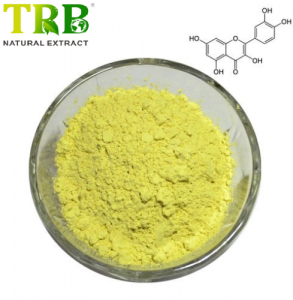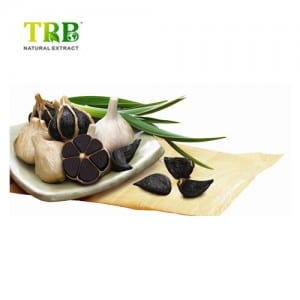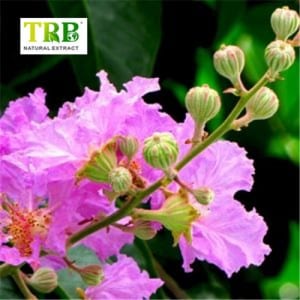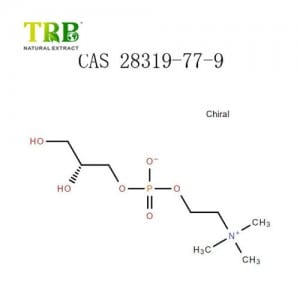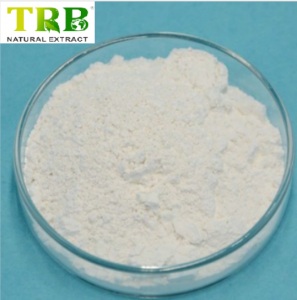So as to give you ease and enlarge our company, we also have inspectors in QC Team and assure you our greatest support and product or service for Dihydroquercetin Powder Taxifolin Dihydroquercetin, Our goods are widely used in many industrial fields. Our Corporation Services Division in good faith for that purpose of the quality of survival. All for customer company.
So as to give you ease and enlarge our company, we also have inspectors in QC Team and assure you our greatest support and product or service for China Dihydroquercetin and Taxifolin Dihydroquercetin, They are sturdy modeling and promoting effectively all over the world. Never ever disappearing major functions within a quick time, it’s a have to for you of fantastic good quality. Guided by the principle of Prudence, Efficiency, Union and Innovation. the corporation. ake an excellent efforts to expand its international trade, raise its organization. rofit and raise its export scale. We are confident that we are going to have a bright prospect and to be distributed all over the world in the years to come.
| Product name | Bulk Quercetin powder |
| Other name | sophorae Japonica extract, Meletin;Sophoretin;Xanthaurine;Quercetine; Quercetol 2-(3,4-Dihydroxyphenyl)-3,5,7-trihydroxy-4H-chromen-4-one;Flavin meletin;3,5,7,3′,4′-Pentahydroxyflavone |
| Plant source | Sophora Japonica L. |
| Cas No. | 117-39-5 |
| Molecular formula | C15H10O7 |
| Molecular weight | 302.23 |
| Appearance | Yellow |
| Specification | 10%; 95%; 98% by HPLC |
| Benefits | Antioxidant;Anti-inflammatory;Anti-tumor;Cardiovascular support; Brian health. |
| Applications | Used in pharmaceutical API, dietary supplements, cosmetics, etc. |
What is Quercetin?
Quercetin is a colorant with strong antioxidant properties, it is a natural ingredient that belongs to a class of plant compounds called “flavonoids”.

Quercetin Sources
Quercetin is naturally found in many plant foods, especially in the plant epidermis or peel.

Quercetin food sources
Quercetin is found in a variety of foods, including apples, broccoli, kale, cherry tomatoes, onions, black and green tea, berries, grapes, and leafy greens.
Quercetin botanical sources
Sophora japonica is a commonly used Chinese medicine. In the dietary supplement market, quercetin is often extracted from the dried flowers and buds of the legume sophora japonica L., The main active ingredients of sophora japonica extract are rutin and quercetin, which has the functions of anti-oxidation, inhibiting cancer cells, and protecting nerve cells.
Quercetin forms and specifications
Quercetin is a plant-based compound that has a wide range of potential health benefits. It is available in a variety of forms, including Quercetin 10% powder, Quercetin 95% powder, Quercetin 98% powder, Quercetin Dihydrate, Quercetin Anhydrous, and Quercetin Phytosome. Quercetin Phytosome is the most bioavailable form of Quercetin, meaning it is the best absorbed by the body. Quercetin Anhydrous is the most concentrated form of Quercetin, and Quercetin Dihydrate is the most stable form.
- Quercetin 10% powder
- Quercetin 95% powder
- Quercetin 98% powder
- Quercetin Dihydrate
- Quercetin Anhydrous
- Quercetin Phytosome
- Quercetin custom extract according to your specific requirement
Quercetin VS Quercetin Phytosome
Quercetin is the most common form, but quercetin phytosome is more bioavailable. Quercetin has a very low bioavailability, it’s hard for your body to absorb it.
Quercetin Phytosome, a new food-grade and lecithin-based formulation of quercetin. “Phytosome”, the term simply translates to “Phyto” + “Liposome”. Phyto means “plant”, Phytosome is a plant-based delivery system for herbs, nutrients, and other active compounds. liposome means “tiny lipid or fat particles”. It is usually made by combining the bioactive ingredient with a phospholipid.
Quercetin VS Quercetin Dihydrate VS Quercetin Anhydrous

Both quercetin and quercetin dihydrate are organic flavonoids. The main difference between them is that quercetin is a plant flavonoid, while quercetin dihydrate is a synthetic compound. In addition, the appearance of quercetin is yellow crystalline powder, while quercetin dihydrate is bright yellow.
Quercetin anhydrous and quercetin dihydrate mainly differ in the amount of water they contain. The aqueous ingredients of quercetin anhydrous are about 1% to 4% and the sugar molecules attached to quercetin have been extracted. This means 13% more quercetin per gram for quercetin anhydrous than quercetin dihydrate.
Quercetin dihydrate has higher bioavailability when it comes to quercetin supplements.
Quercetin vs dihydroquercetin

Quercetin and dihydroquercetin are both plant flavonoids. The main difference between them is that they have different chemical compositions. Dihydroquercetin is a more powerful antioxidant and more bioavailable than quercetin, as it has two additional atoms of hydrogen per molecule.
In addition, quercetin and dihydroquercetin often come from different plant sources. Quercetin is commonly found in the bitter inner rind of citrus fruits, cherries, and apples, vegetables like kale and broccoli. Dihydroquercetin, also called taxifolin, is often found in milk thistle, onions, grapes, and the tree bark of some conifers.
Quercetin for Covid-19 Recovery

Scientific research and studies on the latest treatment and prevention strategies for COVID-19 have continued. Quercetin plays an important role as a potential inhibitor of COVID-19 viral infection. Its antiviral features are reported through numerous scientific studies.
Best Quercetin Formulas
Quercetin with Vitamin C and Zinc
Zinc is an essential mineral that boosts the immune system. While zinc has plenty of benefits, it needs the help of an ion carrier to get into cells to be used most efficiently. The antioxidant quercetin can play as an ion carrier for zinc. Thus, it may provide additional benefits to enhance the immune, if taking quercetin along with zinc.
Vitamin C also helps immune function. Quercetin, vitamin C, and zinc work together in the body. Quercetin helps to enhance the absorption of zinc and vitamin C, and all have similar antiviral functions.
Quercetin with Bromelain
Bromelain, a proteolytic enzyme, is purified from pineapple. It is active and stable in gastric acid. Bromelain can speed up the breakdown of large protein complexes while helping in their absorption.
Quercetin and bromelain are very popular partners since quercetin works on antioxidant levels to reduce the harm and irritation caused by free radicals, while also inhibiting your histamine reaction (which causes allergic reactions); While bromelain works at the enzyme and protein levels, limiting the action of metabolites and neutrophils in inflammation.
Quercetin with Alpha Lipoic Acid
Quercetin is a plant polyphenolic flavonoid and has antioxidant activity. Alpha-Lipoic acid powder (ALA) is an endogenous antioxidant that can cross the blood-brain barrier very efficiently.
Quercetin and alpha-lipoic acid complement each other and protect the brain against oxidative stress caused by aluminum chloride
How does Quercetin work?
Quercetin has many naturally-occurring properties which are beneficial to human and animal health. This powerful phytochemical has been reported to be effective in preventing or relieving symptoms of various diseases. Quercetin can intervene at the cellular level in a variety of prevention and treatment modalities:
- Prevent the further development of the disease by inhibiting or inactivating enzymes and pathways
- Improving the production of molecules and helping maintain healthy cells.
- Reducing cell degradation by reducing the substances that make cells vulnerable to dysfunction.

Quercetin can prevent TNF-α from activating ERK, JNK, c-Jun, and NF-κ (Bnuclear factor-κB) directly, which are highly effective inducers of protein secretion and proinflammatory gene expression. Besides, quercetin increase peroxisome proliferator-activated receptor c (PPARγ) activity, thus indirectly preventing inflammation, and antagonizing NF-κB or activator protein-1(AP-1) transcriptional activation of inflammatory genes. All of these work together to block the TNF-α-mediated induction of inflammatory cascades.
TOP 3 Quercetin health benefits
Supports Cardiovascular Health

Quercetin helps to improve better blood circulation by helping blood vessels dilate and helps the body produce more nitrous oxide which enables better dilation. Quercetin also reduces blood platelet aggregation, thus helping blood flow better with less chance of blood clots forming.
Human studies in 580 people showed that taking more than 500 mg of quercetin daily supplement reduced systolic and diastolic blood pressure by an average of 5.8 mm Hg and 2.6 mm Hg, respectively.
Improves Anti-Inflammatory & Immune System

Free radicals may not just simply damage your cells. Studies show that high levels of free radicals will help activate genes that promote inflammation.
One of the most important benefits of quercetin is its function of reducing inflammation in your body. It has a prominent ability to inhibit the production of histamine and the functions of cyclin-dependent kinases. These biochemical substances (Histamine) and enzymes (cyclin-dependent Kinase) are involved deeply in inflammation, especially in allergic reactions. Quercetin helps reduce inflammation in your body by temporarily blocking its function.
Supports Healthy Aging & Overall Health

Quercetin and its derivatives, quercetin octanoate (as a proteasome activator), affect the cellular lifespan, survival, and viability of HFL-1 primary human fibroblasts by their antioxidant properties. In addition, when these compounds are added to already aged fibroblasts, a rejuvenating effect is observed. Finally, when applied to cells, these compounds promote physiological changes (known as whitening effects).
Quercetin side effects
In some cases, taking more than 1,000 mg of quercetin a day may cause mild symptoms such as a headache, stomachache, or tingling sensation. High doses can cause kidney damage.
Quercetin dosage
Quercetin has been safely administered under medical supervision at doses of up to 1,000 mg twice daily for 12 weeks. Recommend dosages range from 500–1,000 mg per day

